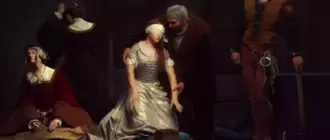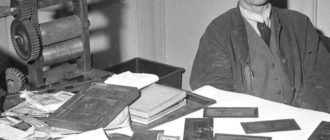
Ebru (from Persian ebri – “cloud”) is an ancient technique of painting with paints on water with further transfer of the drawing onto a solid base (paper, fabric or leather). Ebru presents the artist with ample opportunities to create unique images that skillfully imitate the texture of natural stone – marble. Therefore, this technique is often referred to as “marbled” or “Turkish marbled”.
Ebru has long been used in the East for utilitarian purposes in the manufacture of endpaper covers for valuable books, as well as by calligraphy masters. In addition to abstract compositions using this technique, some artists can create drawings with individual elements of realistic images of flowers, trees or colorful landscapes.

Features of the ebru technique
Ebru is an unusual painting technique that requires the artist to carefully prepare the water base and the ability to thoroughly use special tools.
The process of creating drawings using the ebru technique includes several sequential stages:
- Manufacturing of special liquid paints by adding natural pigments to water (to obtain yellow – arsenic, for blue – Lahore blue, for black – soot, for white – lead white, for red – iron oxide).
- Preparation of the base for painting by adding a natural thickener to the water – an extract of the prickly plant of Hevea. The resulting solution is then carefully poured into a shallow container (bath).
- Creation of the background of the future image on a water basis using a special comb, with which the droplets of paint are evenly distributed over the surface of the water.
- Drawing with a brush and an awl. The artist carefully moves the droplets of paint across the surface of the water, creating all sorts of colorful patterns.

At the final stage, the master carefully places a sheet of paper on the finished surface of the drawing, and then removes it and hangs it up to dry. After that, all residues of paint floating on the surface of the water are carefully removed from the bath in order to prepare the base for the creation of the next composition.
Modern artists working in the ebru technique usually use ready-made factory paints in their work. But even today, many folk craftsmen in the countries of the East prefer to independently create bright natural colors according to ancient recipes.

History
The history of ebru is deeply rooted in the past, and scientists have been arguing about where this painting technique first appeared for many years. Most experts are of the opinion that the ebru is of Central Asian origin, it was invented by ancient masters in the territory of modern Iran or Afghanistan. According to another version, the ebra was invented in the Bukhara Khanate (present-day Uzbekistan) during the reign of the Sheibanids in the first half of the 16th century.
Thanks to close trade ties, the technique of painting on water gradually spread to many countries of the Islamic world. Authoritative historical sources testify that Ebru technologies were massively used by Indian artists during the heyday of the Mughal Empire (XVI-XVIII centuries).

Much earlier than in Central Asia, at the beginning of the 12th century, Japan invented its own paper marble technique called suminagashi. Unlike ebru, colored ink was used as floating paint, and no thickener was added to the water. The traditions of this ancient technique were carefully preserved by Japanese monks and used for the original design of handwritten books and scrolls.

In Europe, the first attempts to create marble technique by Venetian masters date back to the 15th century.
A century later, scientists of the Renaissance continued their research on this topic, and the first serious scientific publications appeared in the first half of the 17th century. Since that time, marbled paper has become a popular material for the manufacture of book endpapers.
Since the beginning of the 19th century, the Ottoman Empire has become the most influential world center of marble. Turkish craftsmen have perfected the ebru technique, using it not only to create abstract images, but also in calligraphy.

And today, ebru remains a popular painting technique for both professional artists and amateurs. It is often used by adherents of modern abstract art to implement the most daring ideas of the author in striking works. Marbled paper is also in demand in the art education system for children. With the help of this ancient technique, little ones get the opportunity to develop their creative skills and join the world of beauty.






